The elaborate web of steel supports propping up the facades of three old whiskey warehouses on West Main Street is a testament to the cultural significance of the so-called Whiskey Row Block.
Over the past decade, the block of boarded up buildings has come back to life with the renovation of several buildings into the Whiskey Row Lofts, Patrick O’Shea’s, and others. That renaissance continues today as two more whiskey warehouses are being converted into the new home for Brown-Forman’s Old Forester Distillery and three more structures are being converted into the mixed-use 111 Whiskey Row.
Those latter plans were delayed this summer following a shocking fire that tore through the buildings, incinerating much of the interior and collapsing portions of the complex’s party walls. The development group, Main Street Revitalization, includes Julie LaValle Jones, Craig Greenberg, and others. They vowed earlier to continue on with the project and engineers were brought in to determine the extent of the damage.
The plan for 111 Whiskey Row remains unchanged, Jones told Broken Sidewalk this month. By mid-2017, the three structures will house a mix of retail, restaurants, offices, and apartments. How the team will achieve that end, however, had to be reevaluated after the fire.
Because the fire collapsed the roof and several floors inside the buildings, a new steel and concrete superstructure will be installed inside 111 Whiskey Row, invisible from the street. “The external face of these buildings will be brick,” Jones said. “They’ll essentially be configured in their original shape.”
Before any of that can happen, however, crews have been on site scrutinizing every detail of the buildings. “We’re analyzing every brick,” Jones said. “They’re looking at whether they can be reused.” That’s part of an ethos that wants to make Whiskey Row a symbol that Louisville values its heritage. “I don’t know if [the state] want us to do that, but we want to salvage the original bricks,” Jones said. “And we are.”
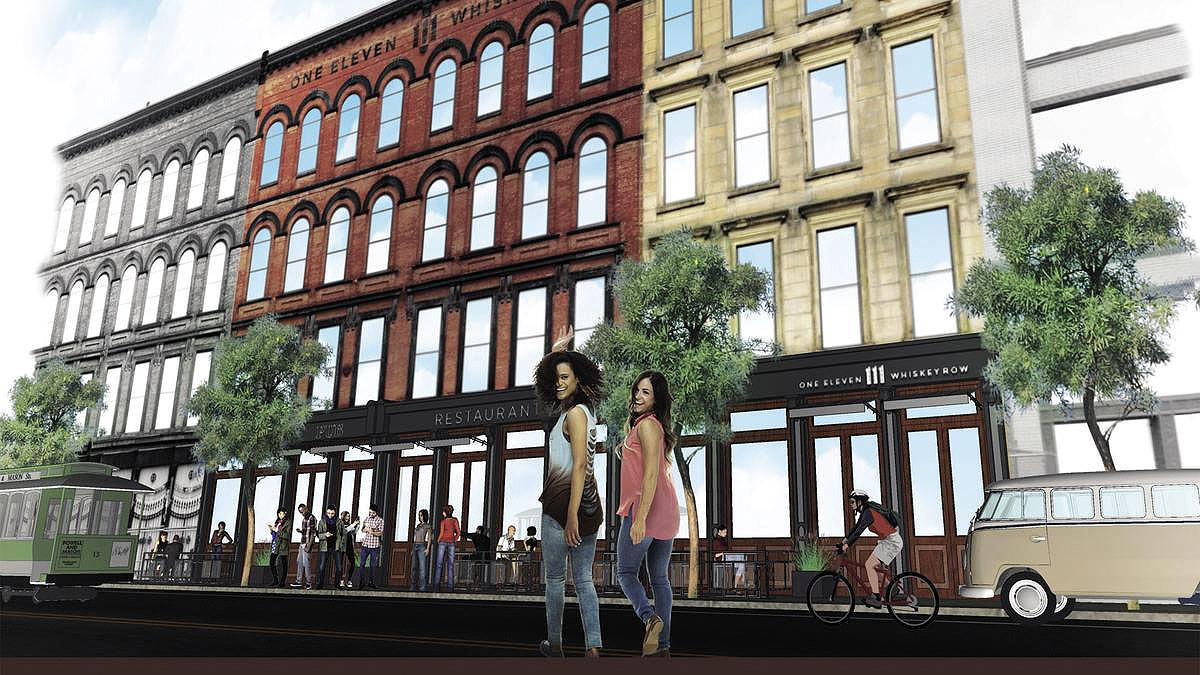
Crews are “going up, over, and down” on tall lifts to study the walls’ bricks and mortar, some of which turned to dust and must be removed. Loose bricks are being stored and other debris is being cleared. It’s an arduous process meant to keep workers safe and the buildings standing.
Jones said the debris removal stage would take a couple more weeks and then a salvage operation can begin. Everything that can be saved on site is being saved, including wood that’s no longer structural but could become furniture for future tenants.
The project is now expected to be complete and occupied by mid-2017. Details on leasing space in the building can be found on the 111 Whiskey Row website.
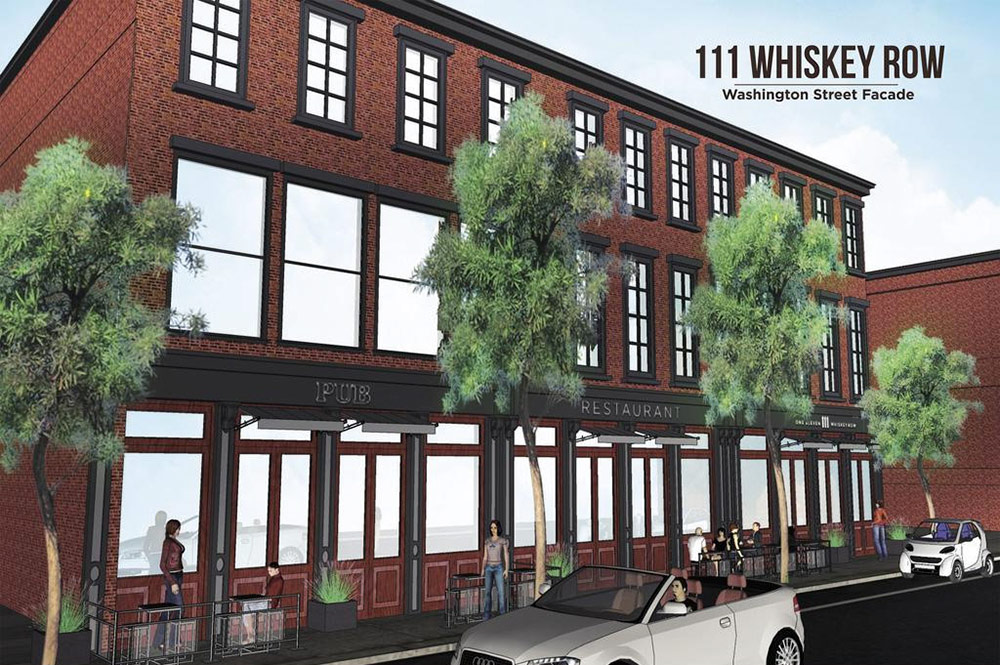

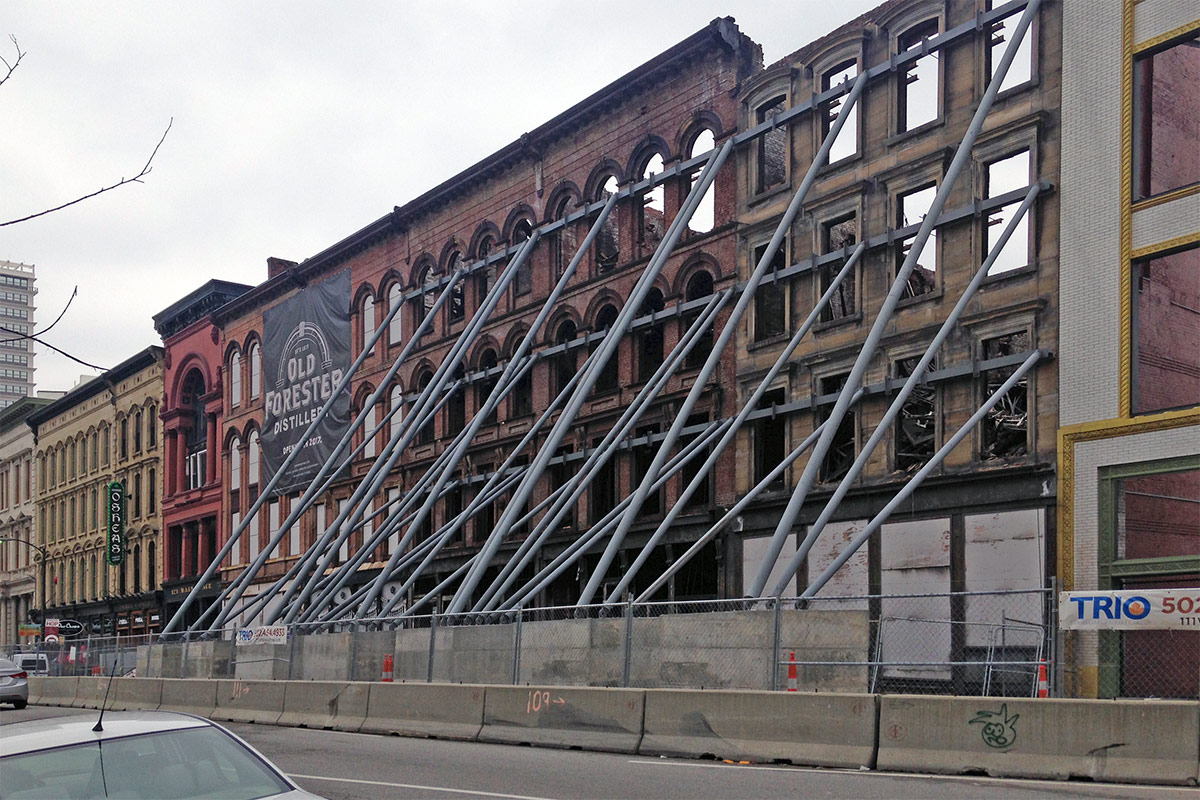

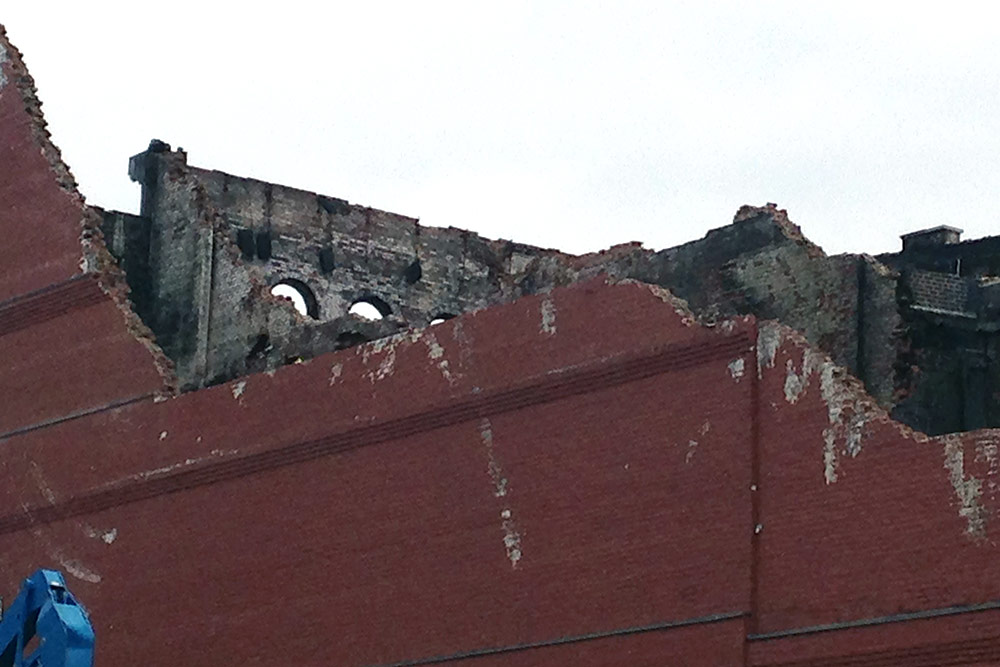

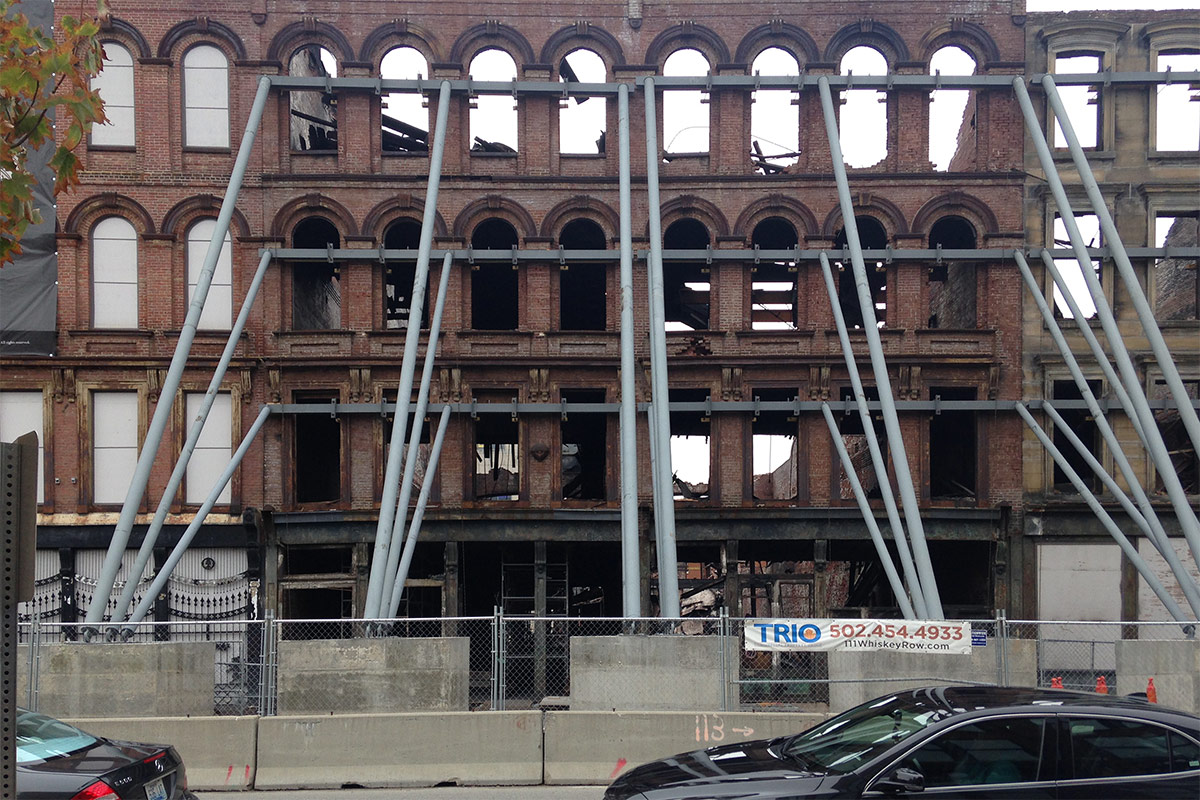
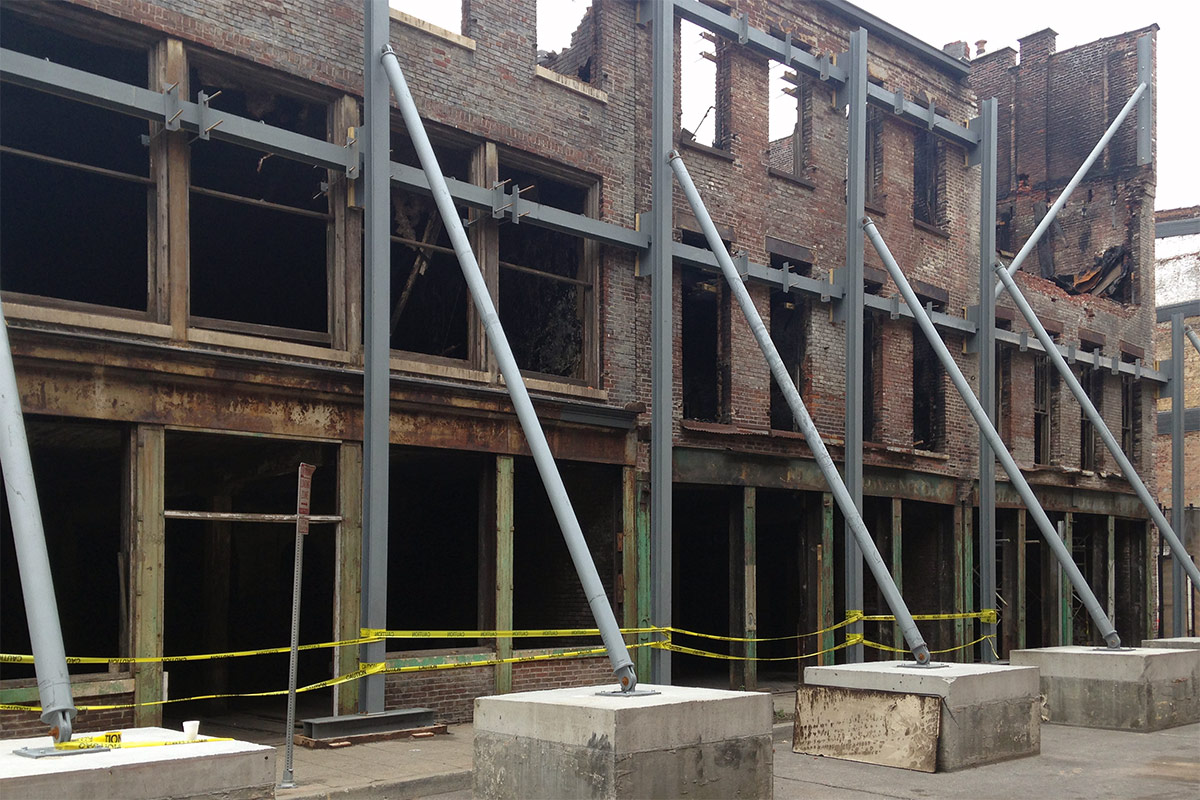


Inspiring and heartening for those of us in the trenches elsewhere in the city. -Victorian Louisville, Inc.
“The elaborate web of steel supports propping up the facades of three old whiskey warehouses”
I work near this area – the amount of rush-hour traffic backup these metal supports cause is enraging. How many person-hours are lost due to this traffic lane blockage? Are the developers somehow compensating someone for this immense social cost? (The city? But why would they deserve compensation? They are just as responsible for wanting these brick piles preserved) I’d certainly like my time back. I value my lost time more than I do the historical significance of the tiny fraction of the original bricks that remain standing at these sites.
Back of the envelope calculation: 2,000 cars each day wait for 10 minutes on average, occupied by 1.2 persons on average, with time valued at $15/person-hr = $6,000/day in wasted time.
It does not matter what they build or redevelop here on Main St. They could build the Arc de Triomphe or The Eiffel Tower on Main and it still will not matter since because these people are the same ones that gave you this:
http://brokensidewalk.com/2016/spaghetti-junction-aerials/
They could redevelop all of Main St and it still does not add to the neighborhood since they were they same ones that destroyed it with the weblink above